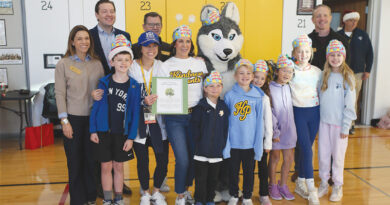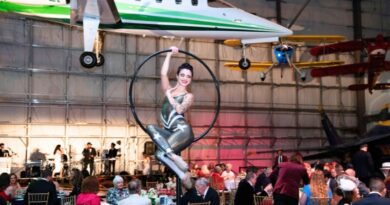School of the Future
Dallas company builds virtual world for hybrid school students
It may look like a game, but when students “walk” into the new Dallas Hybrid Preparatory at Stephen J. Hay this August, they’re going to be stepping into a virtual world that is designed to not only mimic the feel of going to school, but will actually be responsive enough to tailor lessons to their individual interests.
It’s something that Taylor Shead, CEO of STEMuli, the Dallas-based company charged with creating that world, is extremely excited about.
“The Dallas Education Foundation and Dallas ISD, when we came together to build the product before we knew it was going to be used in a hybrid school, they were like, ‘We don’t want to put a band-aid over the pandemic. We want to go forward. We don’t ever want to go back to the old normal,’” she said. “So what we’re doing with this platform is we’re building it so it could scale across all Dallas ISD schools to some capacity.
“We have no idea what that exactly looks like, but we’re probably going to do a pilot test at Conrad High School next year as well in order to understand what this could look like in high school.”
If the company can answer that, Shead said there’s no reason that the concept couldn’t scale across the entire state.
But ultimately, she said, this is about creating a right-sized learning environment for every student, and also to make it a little easier for teachers, too.
“This is about reimagining teaching and learning,” Shead said. “But it’s also about improving teacher efficiency. One principal told me, ‘Taylor, I counted how many apps I have to use these days — it was 23.’
“So we talked to administrators as well as teachers in order to build a way that their lesson planning, instructional calendars, grades, and attendance in one pretty interface that connects those tools on the back end.”
That also translates into fewer headaches for parents and students, too, as all of the apps, programs, and virtual classrooms they had to juggle over the past year and a half are also all accessed on one single platform.
Shead said the other benefit to the platform is that the teacher’s lessons will be recorded and available to students (and parents) to reference later — a boon for any parent who has ever looked fourth-grade math in the eye and realized it didn’t resemble what they did in fourth grade at all.
Shead said that also opens up a whole other possibility to make learning a family effort by offering courses and skill-building for parents and even younger siblings.
“How many of our parents are not proficient in math and science?” she said. “So what if there’s a way where there is some sort of parents academy where they can access some of this instruction to build their own skills? That’s our goal, too — how do we make this multigenerational, where the parent can go and learn a skill, and then the younger brother or sister who is watching their older sibling do something and is getting inspired can also build their skills?
“There’s so much potential when you actually have learning taking place outside of the four walls of the classroom.”
And as cool as this gamified virtual world is, Shead said it’s not just fun and games.
“In this video game world, it’s cool looking,” she said. “But people should understand that Fortnite and Minecraft and all these video games produce so much data on what players like to do, like where they’re looking, where they’re spending their time.”
The data, she said, can be used to improve the already popular personalized learning approach by being even more responsive to student interests.
“Traditionally what personalized learning means is like, if you ask me a series of questions, depending on how I answer, I get a next series of questions pertaining to that answer, but this is different,” she said. “I want a student in fourth grade to be able to tell the system, ‘I want to be an astronaut,’ or ‘I want to be an exotic animal veterinarian,’ and when they tell our system that, we continue to produce experiences for these kids that can get them prepared for that career and actually see themselves in that career.”
While the pandemic-wrought virtual learning has had very widely documented impacts on student achievement, there have been some students and families who have thrived with it.
Shead said that parents have mentioned that “there was a lot less anxiety and they could take more ownership of their learning.”
And with the platform her company has built for Dallas ISD, students can take even more ownership, she said, even choosing how their avatar looks. The system is responsive enough that when a student chooses the option to raise their hand, their avatar responds accordingly on the screen.
“So it’s almost as realistic as it could be in a virtual world,” Shead said. “And the other aspect that we’re really excited about is the ability for them to collaborate in a virtual world.
“So at the Hybrid school, they’re doing this project where the students will actually build a small, tiny house. In our virtual world, we gave them the ability to build a tiny house, and they’ll be able to work like a team and start building and say, ‘OK, you work on this aspect, I’m going to work on this aspect,” and invite their friends to come view their project.”



















